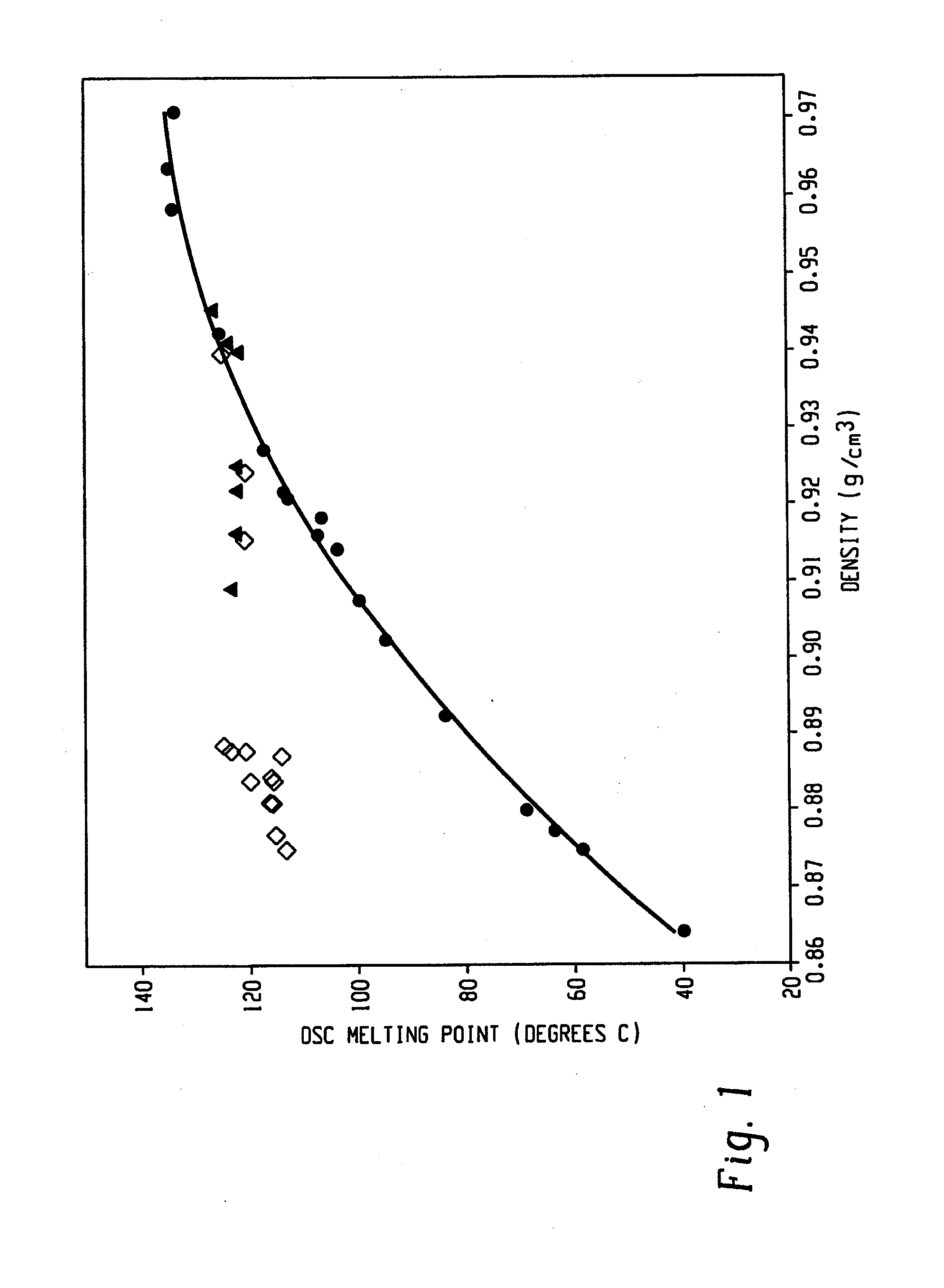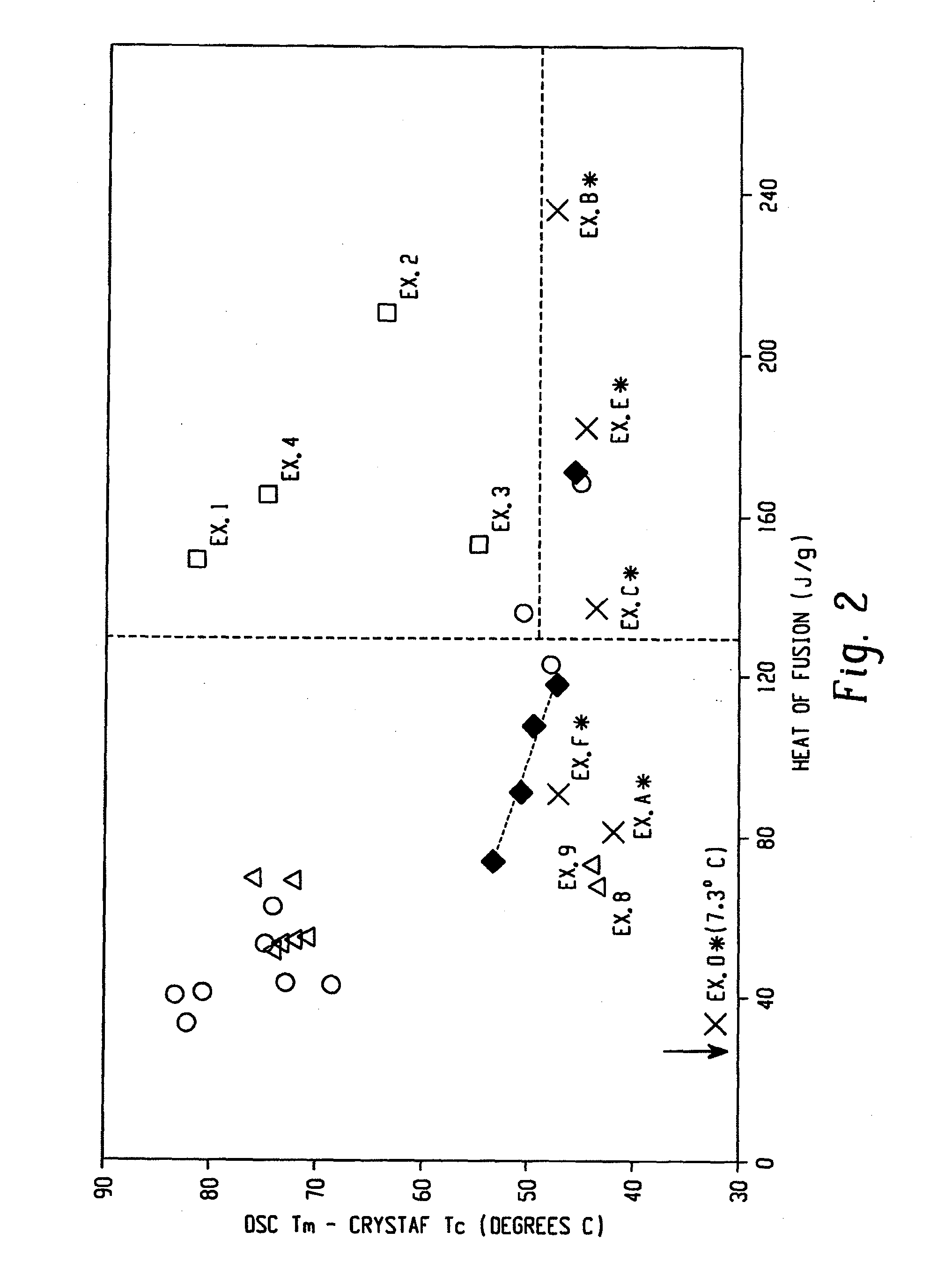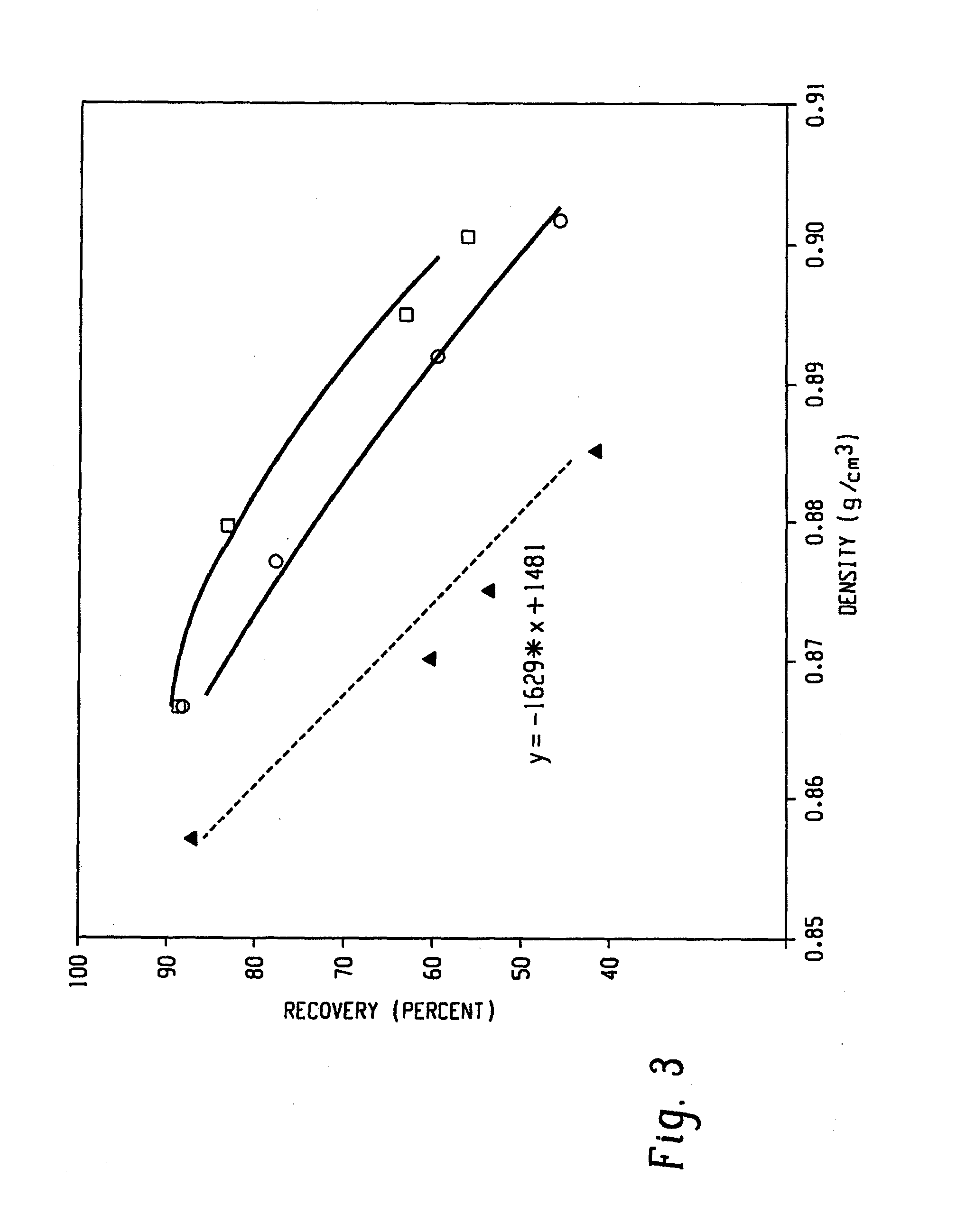Phylon Processes of Making Foam Articles Comprising Ethylene/alpha-Olefins Block Interpolymers
a technology of ethylene/alpha-olefins and interpolymers, which is applied in the field of improving the process of making foam articles, can solve the problems of vulcanized rubbers that are difficult to process, lose desirable properties, and are generally limited to a single injection material, so as to reduce the cycle time
- Summary
- Abstract
- Description
- Claims
- Application Information
AI Technical Summary
Benefits of technology
Problems solved by technology
Method used
Image
Examples
examples
Testing Methods
[0188]In the examples that follow, the following analytical techniques are employed:
GPC Method for Samples 1-4 and A-C
[0189]An automated liquid-handling robot equipped with a heated needle set to 160° C. is used to add enough 1,2,4-trichlorobenzene stabilized with 300 ppm Ionol to each dried polymer sample to give a final concentration of 30 mg / mL. A small glass stir rod is placed into each tube and the samples are heated to 160° C. for 2 hours on a heated, orbital-shaker rotating at 250 rpm. The concentrated polymer solution is then diluted to 1 mg / ml using the automated liquid-handling robot and the heated needle set to 160° C.
[0190]A Symyx Rapid GPC system is used to determine the molecular weight data for each sample. A Gilson 350 pump set at 2.0 ml / min flow rate is used to pump helium-purged 1,2-dichlorobenzene stabilized with 300 ppm Ionol as the mobile phase through three Plgel 10 micrometer (μm) Mixed B 300 mm×7.5 mm columns placed in series and heated to 160°...
examples 1-4
, Comparative A-C
General High Throughput Parallel Polymerization Conditions
[0246]Polymerizations are conducted using a high throughput, parallel polymerization reactor (PPR) available from Symyx technologies, Inc. and operated substantially according to U.S. Pat. Nos. 6,248,540, 6,030,917, 6,362,309, 6,306,658, and 6,316,663. Ethylene copolymerizations are conducted at 130° C. and 200 psi (1.4 MPa) with ethylene on demand using 1.2 equivalents of cocatalyst 1 based on total catalyst used (1.1 equivalents when MMAO is present). A series of polymerizations are conducted in a parallel pressure reactor (PPR) contained of 48 individual reactor cells in a 6×8 array that are fitted with a pre-weighed glass tube. The working volume in each reactor cell is 6000 Each cell is temperature and pressure controlled with stirring provided by individual stirring paddles. The monomer gas and quench gas are plumbed directly into the PPR unit and controlled by automatic valves. Liquid reagents are robo...
examples 20
[0299]Example 20 comprised olefin block copolymer OBC D9530.00 (obtained from Dow Chemical Company, Midland, Mich.) and four additives as shown in Table 11 and OBC D9530.00 was prepared according to similar processes as described above for Examples 1-191. The density of Example 20 was 0.887 g / cm3 and its melt index was 5, measured under the condition of 190° C. / 2.16 kg.
TABLE 11Ingredients#Example 20OBC D9530.00IRGANOX ™ 1010# 200 ppmIRGANOX ™ 1076# 250 ppmIRGAFOS ™ 168#1000 ppmCHIMASSORBR 2020* 85 ppmNote:#IRGANOX ™ 1010, IRGANOX ™ 1076, IRGAFOS ™ 168 are antioxidants from Ciba Specialty Chemicals Inc., Basel, Switzerland.*CHIMASSORBR 2020 is a light and heat stabiliser from Ciba Specialty Chemicals Inc., Basel, Switzerland.
PUM
| Property | Measurement | Unit |
|---|---|---|
| temperature | aaaaa | aaaaa |
| molecular weight distribution | aaaaa | aaaaa |
| molecular weight distribution | aaaaa | aaaaa |
Abstract
Description
Claims
Application Information
 Login to View More
Login to View More - R&D
- Intellectual Property
- Life Sciences
- Materials
- Tech Scout
- Unparalleled Data Quality
- Higher Quality Content
- 60% Fewer Hallucinations
Browse by: Latest US Patents, China's latest patents, Technical Efficacy Thesaurus, Application Domain, Technology Topic, Popular Technical Reports.
© 2025 PatSnap. All rights reserved.Legal|Privacy policy|Modern Slavery Act Transparency Statement|Sitemap|About US| Contact US: help@patsnap.com



